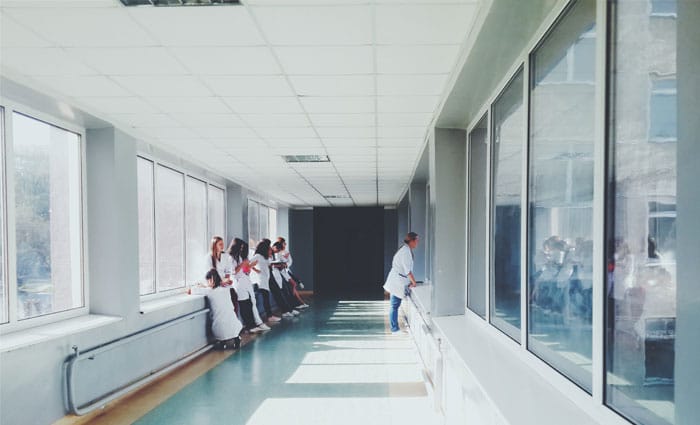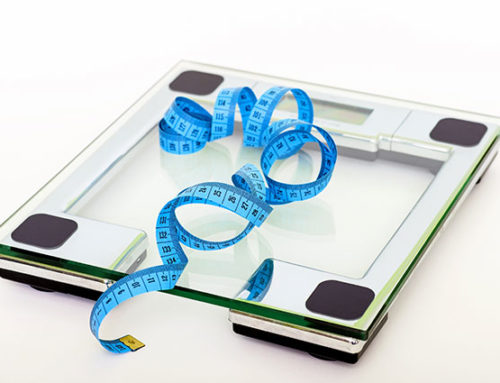The Academy of Orthopaedic Surgeons has reported that over four million people in the U.S. alone go to the doctor to seek care for shoulder problems and shoulder pain every year. One issue growing in numbers is rotator cuff tear arthropathy. This condition is identified by severe arthritis pain in the shoulder that is directly caused by a tear in the rotator cuff. Usually, this injury requires surgery to fix. One of the newest and most popular surgeries to repair rotator cuff tear arthropathy is a reverse total shoulder arthroplasty or reverse total shoulder replacement.
Why is it called a reverse shoulder replacement?
A reverse total shoulder replacement is a procedure that involves reshaping parts of the anatomy of the shoulder. It uses an implant and prosthetics that reverse the position of the ball and socket of the shoulder joint. The surgery changes the position of the ball and socket joint so that the ball is relocated to the shoulder blade and the socket is positioned at the top of the arm bone.
Reverse shoulder replacement surgery restructures the shoulder in a way that improves the mechanics of the muscles that surround the glenohumeral joint and make up the rotator cuff. It is a creative and effective way to restore the structure and function of the shoulder joint. This surgery is the ideal choice for patients who have arthritis due to a rotator cuff tear arthropathy and are at a mechanical disadvantage for other methods of shoulder repositioning.
The deltoid muscle is the large muscle of the shoulder. It is critical in shoulder flexion, extension, rotation, stabilization and movement of the arms overhead. Reverse shoulder replacement is designed to make the deltoid muscle more capable and efficient. When a patient’s rotator cuff is torn causing suffering from arthropathy, the rotator cuff is not positioned correctly nor working properly.
Reversing the ball and socket joint redirects more of the workload of the shoulder to the strong deltoid muscles, making up for the rotator cuff tear and the overall strength and mechanical deficiencies caused by the tear and arthritis.
How does the shoulder prosthesis stay together?
The ball of the prosthesis is screwed into the socket of the shoulder joint, and the new socket is then secured into the head of the bone in the upper arm. The prosthesis flips the position of the anatomical ball and socket while giving it the security and mobility of the original joint.
Why get a reverse prosthesis instead of a standard shoulder replacement?
Reverse total shoulder replacement is different from a standard shoulder replacement. It is clinically used only in the particular circumstance of a patient having rotator cuff arthropathy.
Standard shoulder replacement surgery is typically used to treat shoulder arthritis, but this procedure will only be effective if the shoulder and rotator cuff are correctly positioned and can function normally. Since the shoulder muscles rely on proper alignment and functioning of the rotator cuff, a standard shoulder replacement needs the shoulder to be oriented correctly and functioning properly to be effective.
In the event of rotator cuff tear arthropathy, a prosthetic joint is installed, which safely optimizes the placement of the shoulder. For example, if a standard shoulder replacement surgery was performed on a shoulder that is not positioned or functioning properly, the socket piece of the shoulder replacement will be abnormally stressed, causing it to loosen and wear out more quickly. This is precisely why someone would need a reverse prosthesis for this type of shoulder injury.
What conditions or injuries warrant reverse total shoulder replacement surgery?
Reverse total shoulder replacement was designed for a very specific shoulder issue known as rotator cuff tear arthropathy. Rotator cuff tear arthropathy is a shoulder problem that stems from a severe case of shoulder arthritis that also involves a rotator cuff tear.
There are three distinct characteristics and clinical findings that need to be present to consider rotator cuff tear arthropathy:
- Insufficient movement or function of the rotator cuff (typically caused by a large tear)
- Arthritis in the glenohumeral joint
- Superior migration (an upward rotation or movement) of the ball in the socket
How does this injury normally occur?
This injury often takes years before it is noticed because a patient can have a rotator cuff tear and not be aware of it. They continue to use their shoulder as usual until the injury becomes apparent. Over an extended period of time, the body compensates for the rotator cuff tear, which results in altering the way the shoulder joint moves and functions.
Though the injury itself is not acute, an acute shoulder injury can lead to a rotator cuff tear, which can eventually lead to the development of arthritis in the injured shoulder. Once pain is felt in the shoulder and rotator cuff tear arthropathy has developed, it can be difficult or impossible to restore the shoulder to its normal integrity and proper anatomic function.
After this injury has been diagnosed, the options for treatment are normally geared toward optimizing the current function of the injured shoulder joint or replacing the joint with surgery.
What is the process for reverse total shoulder replacement surgery?
An orthopaedic shoulder specialist will give you a full medical examination to determine if you have rotator cuff tear arthropathy and if surgery is a viable treatment method for you.
The surgery itself takes about two hours. Your shoulder surgeon will make an incision in the top or front of your shoulder. The damaged bone will be extracted, and the new implant and surgical components that will help restore function to your shoulder will be positioned. Many patients can go home within two or three days after the procedure.
Patients usually experience some discomfort for a few days as a result of the surgery. Additionally, your arm will be in a sling, and your specialist may give you a list of exercises to help move your shoulder gently through a range of motion to maintain or increase mobility and muscular endurance. Your shoulder surgeon will likely prescribe physical therapy for improving the strength, flexibility and overall rehabilitation of the shoulder.
What outcomes should I expect from reverse total shoulder replacement?
Though reverse total shoulder replacement therapy is relatively new, the results of this procedure are very promising. A recent study showed an 85 percent success rate for reverse shoulder arthroplasty, with success being defined as the percentage of patients who returned to one or more sporting activities within five months after surgery. Those involved in fitness sports had the highest rate of return, with 81% resuming activity within five months. Highly physical sports such as skiing and tennis saw lower rates of return at 28 and 25 percent, respectively.
What are the potential complications involved with reverse total shoulder replacement?
As with any surgery, there are certain drawbacks and risks. Having been cleared by the FDA in 2003 and performed in the United States since that time, reverse total shoulder replacement is still a fairly new surgical intervention. Though the results and data on this procedure are promising, more data on the efficacy of the surgery and implant are still being collected. Your orthopaedic surgeon can talk to you about specific concerns.
How can I find out if I’m a candidate for reverse total shoulder replacement?
If you are experiencing shoulder pain and think you may have rotator cuff tear arthropathy or some other type of shoulder injury, contact Cary Orthopaedics and make an appointment with one of our orthopaedists. We have multiple doctors who treat shoulder conditions, and Dr. Raymond Carroll is a board-certified shoulder specialist who routinely performs reverse total shoulder replacement.
MAKE AN APPOINTMENT
Resources:
- https://www.hopkinsmedicine.org/health/treatment-tests-and-therapies/reverse-total-shoulder-replacement
- https://orthoinfo.aaos.org/en/treatment/reverse-total-shoulder-replacement/
- https://www.arthritis-health.com/surgery/shoulder-surgery/reverse-shoulder-replacement-risks-and-complications
- https://www.hss.edu/newsroom_reverse-total-shoulder-replacement-patients-see-85-percent-rate-of-return-to-sports.asp






